Crew 245 Mission Summary
Overview
Crew 245 of the Mars Desert Research Station (MDRS), Team Patamars, began organizing in the fall of 2019. We are comprised of a group of young professionals and, although none of us had embarked on an analog astronaut mission before, we had an ambition to come to MDRS together. Shortly thereafter, we were accepted for an early 2021 rotation, designed a series of preliminary research studies, and created operational protocols to enhance the fidelity of our analog experience. Through the uncertainty of the global pandemic, we remained hopeful that we would be able to safely conduct our intended mission. When MDRS management informed us that our mission would be possible, the team kicked into overdrive, excited to make this an incredible first analog astronaut experience for each one of us. The mission that we have since embarked upon has exceeded our expectations and has inspired us to continue as an analog crew on future missions.

Figure 1. Crew 245 Standing in Front of Hab. From Left to Right: Crew Botanist Julio Hernandez, Crew Engineer Shravan Hariharan, Executive Officer (XO) Shayna Hume, Commander Dylan Dickstein, Health and Safety Officer (HSO) Alex Coultrup, and Crew Scientist Olivia Ettlin
The crew was pulled from Commander Dickstein’s network including the Matthew Isakowitz Fellowship Program and his university connections. Together, the team is a well-rounded group of individuals with good intentions, level personalities, and a particularly broad set of technical skills and experiences. Commander Dylan Dickstein is in his final year at UCLA and imminently defending his dissertation on electron emission effects in hypersonics. Executive Officer (XO) Shayna Hume, is a third-year Ph.D. pre-candidate researching Martian Entry, Descent, and Landing at the University of Colorado, Boulder. Crew Scientist Olivia Ettlin is a recent UCLA graduate with a B.S. in Molecular Cell & Developmental Biology and now works for California State Parks in the Natural Resources Department. Crew Botanist Julio Hernandez is a Ph.D. candidate about to defend his dissertation on Structural Health Monitoring at Purdue University. Crew Engineer Shravan Hariharan recently completed his B.S. in Aerospace Engineering at the Georgia Institute of Technology and shall begin his graduate studies this fall at the Massachusetts Institute of Technology where he will research Martian In-Situ Resource Utilization. The sixth member of the crew is Health and Safety Officer (HSO) Alex Coultrup who recently completed her M.S. in Spaceflight Human Factors at the Florida Institute of Technology and finished the Commercial Space Studies graduate program at the International Space University. Coultrup currently works in commercial partnerships and strategic development on the Outpost program at Nanoracks. Although only a few of us had formally met, we bonded quickly over our mutual desire to invest in careers as analog astronauts and our dream of human space exploration.
The following research studies and additional projects comprise our endeavors during our time at the station:
Research Studies
[1] Our soil analysis study was born from a desire to gain a more in-depth understanding of astrobiology, an area Executive Officer Hume had investigated previously during her internship at NASA Goddard. To demonstrate field analysis of a novel environment Hume and Crew Scientist Ettlin devised a protocol to 1) return to sites where past MDRS researchers had already sampled extensively, 2) take multiple samples at these sites, and 3) seek disparate geologic formation locations for ongoing sampling activities. This was a preliminary investigation, intended to educate the researchers on the specific techniques required to effectively collect soil samples on Mars. Its secondary purpose was to analyze the genomic content of those samples and isolate the evidence of bacteria and other extremophiles living in different geologic formations. Upon exiting simulation, the samples will be sent to a commercial lab for genomic analysis. For that reason, results will be forthcoming.

Figure 2. XO Shayna Hume (Left) and Commander Dylan Dickstein (Right) Collect Soil Samples
[2] Human space exploration (and settlement) of Mars is an enormous technical challenge since all equipment and necessities for life (e.g., oxygen, food, water) must be transported from Earth to Mars. One technical challenge impeding a permanent human presence on Mars is establishing sustainable agricultural practices. In this preliminary investigation we explored the feasibility of using different soil media composed of terrestrial soil and Martian regolith. Because importing terrestrial soil to Mars may be prohibitively expensive, Crew Botanist Hernandez devised a protocol that would use local Martian regolith in an optimized proportion as to maximize the total agricultural capacity for the minimal cost and weight. This investigation found that pure Martian regolith is a notably poor growth medium with poor water retention quality and a high susceptibility for compaction. In general, the trend showed that the soil mixtures with the greatest percentages of Earth soil served as the healthiest growth medium for plants. This did not come as a surprise, but the results of this investigation provided significant insights into improving the experimental design for future investigations.
[3] Interest in farming practices was a common theme for our research. To further explore the feasibility of Martian farming, Crew Scientist Ettlin devised an experiment to test growth additives in a compact hydroponics system suitable for use in a Mars habitat. The ultimate goal of the experiment was to determine if the addition of a single variable alone would be sufficient to significantly improve the growth rates and productivity of vegetable plants for consumption on Mars. Considering the results from the three growth variables (concentrated compost biproducts, fungus-enriched fertilizer, and earthworm castings) it has become clear that any of these additives were better than un-supplemented water. It is worth noting that this botanical experiment was impacted by the short time frame of this mission, and a statistically significant difference between the variables could not be determined and therefore no single variable was deemed superior. However, Ettlin was able to provide proof of concept and give strong evidence for the feasibility of hydroponic gardening on Mars as a way to farm without a high resource demand.

Figure 3. HSO Alex Coultrup (Left) and Commander Dylan Dickstein (Right) Analyzing Data in the Science Dome
[4] On future Mars missions, where several engineering and scientific operations will require exiting the Habitat and donning an EVA suit, astronaut dexterity will greatly influence the scope of what can be accomplished and the time to complete such tasks. Crew Engineer Hariharan sought to test the effects of different glove materials, thicknesses, and number of layers (mimicking the different pressurization levels and materials of current EVA gloves) on astronaut grip strength and fine motor skills, using quantitative dexterity measurements such as a Purdue Pegboard Test. Through this study, he determined that rather than the thickness of a glove itself, the driver behind fine motor skills is the amount of free space within a glove; the more securely a glove fits to the astronauts’ fingers, the greater direct control and precision the user has. In addition, a rough or “sticky” glove texture can increase dexterity by as much as 10% compared to a smooth baseline, even if the gloves are equally fitted. This study will be built upon during future analog missions, through the use of prototype EVA gloves as well as the addition of qualitative tests on EVA, with relevant IRBs in place.

Figure 4. Commander Dylan Dickstein (Left), Crew Scientist Olivia Ettlin (Middle), and HSO Alex Coultrup (Right) Returning to the Hab After a Successful EVA
[5] In the case of an emergency event on Mars such as a dust storm, radiation exposure, or injured crew member, rapidly locating an adequate shelter will be essential. This study was an exercise for crew members, designed by Hariharan, to locate potential shelters at sites of scientific interest and identify relative landmarks by which the shelter could be located by future crews (as relative navigation requires no instrumentation and satellite signal). In addition, the team qualitatively assessed each shelter in six categories to determine its potential functionality and allow future crews to prioritize shelter transit if needed. The figures of merit were as follows: ease of access by foot, by vehicle, and by incapacitated crew member, size of shelter, physical protection from wind/dust, and ease of visual identification. On subsequent EVAs, other crew members then attempted to identify these shelters using relative navigation and assess them using the same criteria. It was found that precise bearings to nearby landmarks and qualitative descriptions of the shelter itself aided most in shelter location. In addition, shelters that were assessed as higher in quality were typically large, easily accessible by vehicle/foot, and covered on at least three sides.
Additional Projects
[1] Executive Officer Hume is interested in the implementation of planetary protection protocols. We implemented preliminary measures such as keeping a “cleanroom” environment in the spacesuit room, sanitization of all tools or equipment prior to use on EVA, and careful handling of soil samples during analysis.
[2] Health and Safety Officer Coultrup brought educational projects from two different STEM education nonprofits. The first was the Space Farmer DreamKit by DreamUp which is used in K-12 classrooms to educate students about the differences in plant maturation in Earth’s gravity compared to the microgravity environment. Coultrup modified the classroom version of this experiment by incorporating the same growth media and variables used by Crew Botanist Hernandez and Crew Scientist Ettlin in their projects (replica Martian regolith, earthworm castings, concentrated compost byproducts, and a fungus-enriched fertilizer as mentioned previously). The second was a hardware demonstration for a middle school classroom sponsored by the One More Orbit Foundation (OMOF). OMOF students learned about the limitations of astronaut dexterity imposed by EVA suits and designed simple styluses to aid in the use of tablet devices in the field. The crew tried out these styluses and provided feedback to the students and will debrief the students after the mission on the outcomes of Crew Engineer Hariharan’s dexterity research.
[3] Coultrup was interested in learning how various types of personal rituals (e.g., athletic, interpersonal, spiritual, etc.) practiced by the crew might impact their experience as analog astronauts. She engaged in a series of structured conversations with the five other members of the team to learn about the personal rituals they practiced before the mission, which rituals they anticipated modifying or bringing with them into the mission, reviewing how accurate their predictions were, and understanding how the daily routine of the analog mission either inhibited or nurtured their ability to follow through on their plans.
Creative Ventures
[1] The crew recorded footage throughout the mission and is currently organizing it into a documentary-style video that is intended to be uploaded and shared online. Commander Dickstein has professional photography and videography experience and used his keen eye for storytelling and aesthetics to create a one-of-a-kind video capturing this crew’s experience. The documentary highlights the mission in an incredibly positive light and showcases MDRS as an excellent resource for researchers and aspiring astronauts alike.
[2] Throughout the mission, Hume worked on a series of essays/blog posts about the first-time experience of being an analog astronaut and field scientist. Several of these were posted online on her personal website (shayna.space) via the team’s social media ground support (Elizabeth Balga) during the simulation, and a few more posts will be published immediately following the end of mission. The team has also made a point to catalogue the group’s experience via the team’s Instagram, Facebook, and Twitter (all @redplanetpeople). These accounts shall be used long after the end of this mission to continue to highlight this incredible learning opportunity and illustrate to others the value of MDRS and the Mars Society overall.
This mission has been far more than the sum of its parts. There was a synergistic element to the experience for all of us. As first-time analog astronauts, we did not fully know what to expect, and approached the experience with open minds. After all, we were here to learn, and staying malleable is essential for aspiring astronauts and professionals in any field. We are all in agreement that this experience has exceeded expectations and transformed us from six near-strangers with a common purpose, into a high-functioning crew with robust collaboration and cooperation skills to boot. We are dedicated not only to thoroughly documenting our experiences as we enter the world of analog missions, but also to sharing this experience with others who may follow in our footsteps. With this in mind, our most important lessons learned are as follows:
- Space is a vacuum without people in it
- Human space exploration is a team effort through and through. Each individual plays a role in setting an example for others and maintaining a positive environment.
- The new “right stuff” is a deemphasis of daredevilish pursuits and an elevation of team culture
- Human spaceflight is always a risky endeavor, but on long duration missions, team players with diverse backgrounds are more valuable than individuals with nerves of steel.
- Simulation fidelity is key
- Living as an astronaut on Mars takes dedication from all members of a crew. The team can either use this opportunity at MDRS to live like a Martian, or a team can choose to bend the rules. The former group will be on Mars for two weeks and the latter will be visiting a research facility in Hanksville, Utah.
This crew has a strong interest in continuing to work together. The team plans to use the preliminary studies from this analog mission as an entry point for even more rigorous studies, and to stick together as a crew for analog missions in the future.

Figure 5. Crew 245 in the Science Dome. From Left to Right: Top Row – Crew Engineer Shravan Hariharan, XO Shayna Hume, and Crew Botanist Julio Hernandez; Bottom Row – Crew Scientist Olivia Ettlin, Commander Dylan Dickstein, and HSO Alex Coultrup.
Acknowledgements
This mission would not have been possible without the following organizations, institutions, and indivuals:
First, we want to thank our employers, UCLA, CU Boulder, California State Parks, Purdue University, Nanoracks LLC, and the Jet Propulsion Laboratory for allowing us to take time off to pursue this incredible opportunity. These include our advisors and managers from our respective organizations: Distinguished Professor Nasr Ghoniem, Dr. Jay McMahon, Dr. Danielle LeFer, Dr. Tyler Tallman, Jeff Manber, and Dan Coatta.
We also extend specific gratitude to Dr. Allie Anderson for lending us tools from CU Boulder, Dr. Andrew Aldrin and Jim Christensen of the Aldrin Space Institute and ShareSpace Foundation for their support of our research, Lauren Milord of DreamUp, and Jannicke Mikkelsen and Phillip Lewis of the One More Orbit Foundation for the opportunity to impact K-12 students’ access to STEM education.
We also received many generous donations of equipment for this mission. Molekule Air Purification provided air purifiers which added a level of confidence in this pandemic environment. Other supplies were donated by GSI Outdoors, the UCLA Store, and Grant Coultrup. Finally, we received the financial support of 38 private donors to fund our research and mission costs.
None of our social media presence during the mission would have been possible without the attention and support of our Ground Support, Elizabeth Balga, a friend, talented engineer, and fellow aspiring astronaut.
Finally, it is with glowing hearts that we recognize the Mars Society, Dr. Robert Zubrin, Dr. Shannon Rupert, and Atila Meszaros for their ongoing work through the years and the preparations they made to bring in our team as the first crew back to MDRS since the onset of the pandemic. Team Patamars (MDRS Crew 245) looks forward to what is next in this budding relationship. No looking back now. To Mars and beyond we must go!


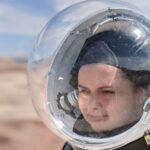


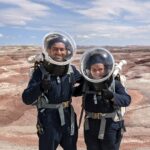
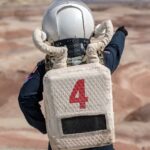
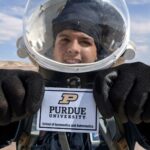
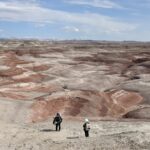
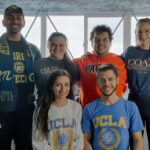
You must be logged in to post a comment.